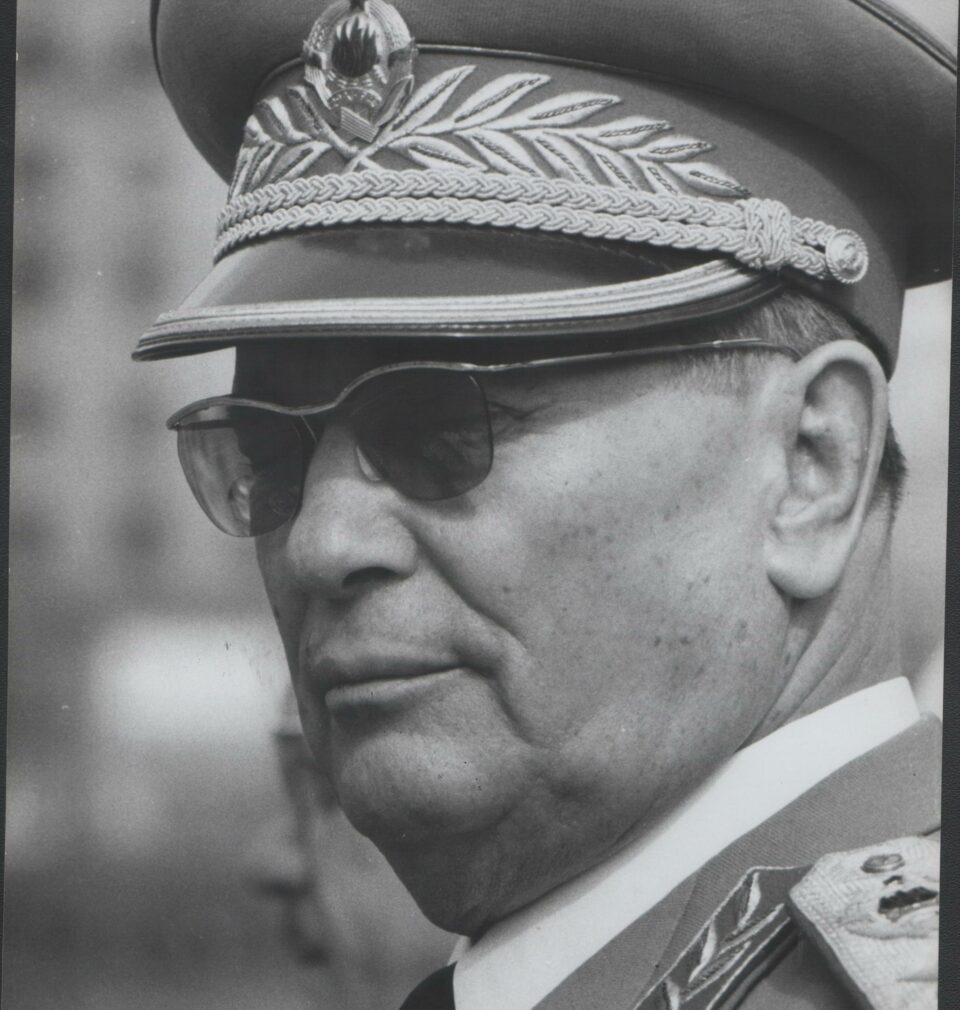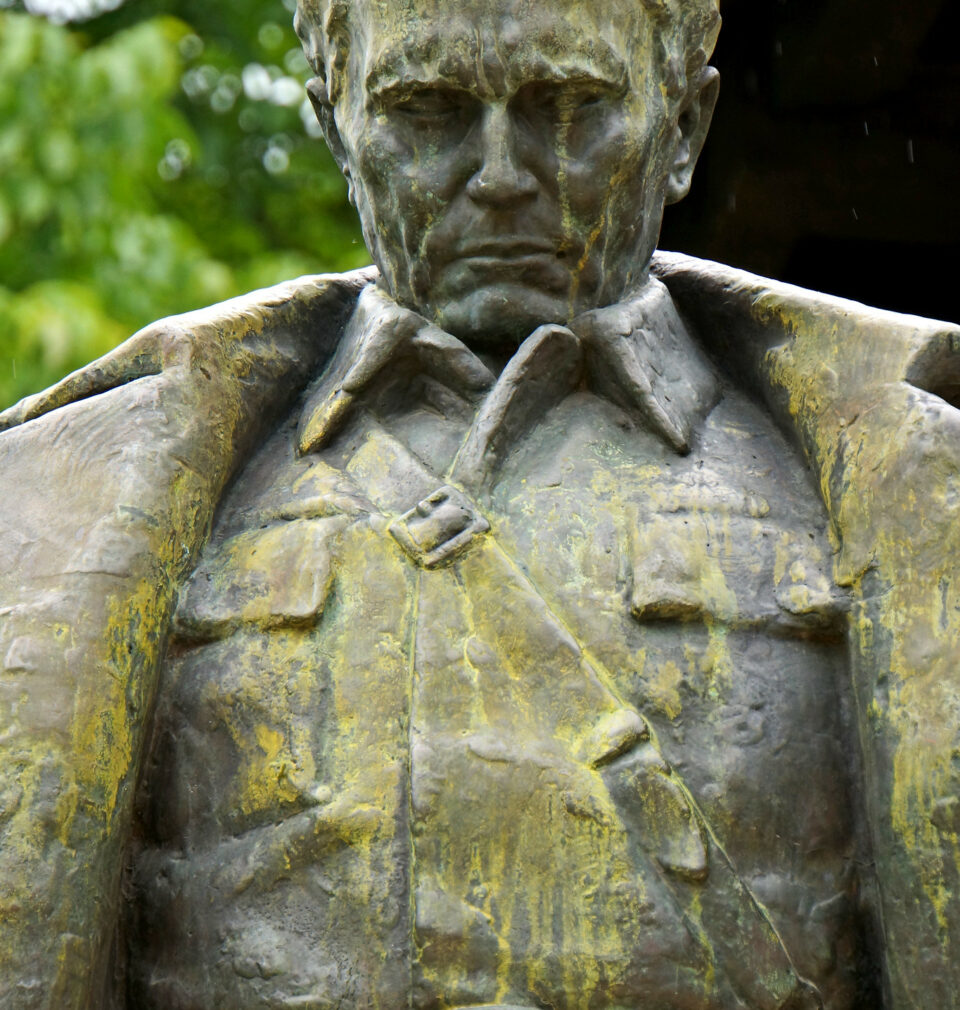
Stories From Countries Which Are no More
A Rung From St. Jacob’s Ladder
Publication: 13 October 2021
TAGS FOR THE ARTICLE
TO THE LIST OF ARTICLESDictators everywhere in the world live their prolonged lives, with their charisma and human traits fascinating the crowds even after their death. When Fidel Castro passes away, he will certainly still be loved, even though Cuban prisons are full of political prisoners.
Simon Sebag Montefiore, a biographer of Joseph Stalin writes about the specific “executioner’s charm” which allowed the dictator to strictly control everything around him. Initially, Stalin not only showed his approval and kind reprimand towards the people who were closest to him, but apart from his greatest virtues, he was also able to reveal his weaker, human, side. Around 1935, however, Stalin started to feel less comfortable with the family-like atmosphere that he had created around himself, and started to feel that his colleagues didn’t fully appreciate his uniqueness. And, as Montfiore claims, he became furious when two of his friends, members of his entourage, forgot to come to a dinner that he had invited them to. The fact is that they were two hours late and found him in a poor mood playing pool with his bodyguards. He ordered that the insubordinate guests be shot.
Despite the fact that Stalin’s bibliography is full of such situations and events, he was, indeed, idolized like no other at the time. When he died, the poet, Yevgeny Yevtushenko, as he himself admits, wept, the French Left mourned, people in Moscow lamented the great loss, and thousands of people were trampled to death during the funeral. Let’s say they did not know about the 20 million of his victims, although today everybody knows about them and still the television shows clips of marchers carrying portraits of Stalin on demonstrations in Russia. Of course, one can understand the nostalgia of the people who, under communism, had a better life, and even more, one can understand the anger of the impoverished majority which the Russian “crony capitalism”[1] has pushed to the margins of the society at a time when the new oligarchs are strolling under the golden stuccos of their palaces. But why do they say, straight to the camera, that he “understood humans” and “was always on the side of the Russian worker” when there is no doubt that, first and foremost, he was intoxicated with his own power and authority?
Until recently, the greatest cult of Stalin was seen in Georgia. In reports from this beautiful country one could always come across pictures of monuments of Stalin or his photo stuck to the windows of buses. Stalin was, of course, Georgian but the truth is also that not since Ivan the Terrible had Russia seen someone so pro-Russian as Stalin was. “I am familiar with the intelligentsia of small nations,” the great Stalin said one day to Slovenian party leader, Edvard Kardelj. “Your Slovenian intelligentsia is as weak as the Georgian one.” And that is why, he treated its members in the same way he treated members of the Georgian intelligentsia – he sent them to the Gulag. And others too. A man who would order murder for petty reasons, even more petty than the late arrival to the dinner, is today idolized by many Georgians and, of course, Russians.
Tito did not hate Slovenians as much as Stalin hated Georgians. There is no documentation that he would order somebody to be shot because this person had a problem with their memory. His favourite song was a Slovenian song, She was washing the nappies at a cold spring, he enjoyed eating žgance[2] with bacon bits, which he even made himself for breakfast, even though his doctors didn’t allow it. He also liked to make jokes in Slovenian and he is famous for his funny etymology of the word tovariš (comrade), which, apparently, comes from the word tovariti (in Croatian), tovoriti (in Slovenian), meaning “to load, to carry loads”, because the Slovenians are hard-working people and carry loads like donkeys. He did not hate Slovenians, he loved them, just like he loved all nations of the Yugoslavia. And everybody loved Tito. It is true that he allowed the murder of over 10,000 people, and sent even more to prison, but he never punished anybody because he was Slovenian but rather because somebody was undermining him or his people. He treated all the nations of Yugoslavia in such a just way, from Triglav to Vardar[3].
Each spring, worshippers of Tito, in both Triglav and Vardar, make frenetic preparations for May 25th, the day of his birthday, which used to be celebrated with much pomp and stadium rituals. International journalists commenting on these events in the countries of the former Yugoslavia almost always add an obligatory point to their texts and programmes: the cult of Tito. And their interlocutors pay tribute in front of monuments of Tito, stroll on his streets and squares and show the cameras his statuettes and communist kitsch of all kind; they take pictures in front of his portraits with so much enthusiasm that they could be the subject of envy of other less ambitious adorers, like those who worship Antoni Padewski.
While this phenomenon can somehow be understandable in Bosnia, which experienced the terrible war, during Tito’s times it enjoyed peace and quiet, and it is even more difficult to comprehend the fascination with the dictator of Slovenia, which has been an independent state for the last 20 years and a member of the European Union for almost ten years. In May, when Tito’s birthday is celebrated, this day, which during Tito’s times was a state holiday called Youth Day, Slovenia looks like Georgia with its monuments, statues and statuettes of a different dictator.
The day before Slovenia joined the EU, the city government of Nova Gorica thought that the most important thing to do was to restore the sign “OUR TITO” which was on the side of the hill rising over the city, even though this sign has long been the subject of ridicule, even in guidebooks such as The Lonely Planet. Young people, the hope and future of Slovenian journalism, deliver speeches on the Youth Day in a television studio while wearing pioneer scarfs around their necks. The professors of the Department of Social Sciences at the University of Ljubljana talk nonchalantly to the cameras with portraits of Tito in the background – just like the Georgian bus drivers. And hotel managers from the Upper Carnolia[4] region, at the idyllic alpine Lake Bled, put Tito’s head, meaning his bust, in the middle of the table. Hence, it really remains unclear whether the future journalists are not aware of the fact that they look quite old when surrounded by this iconography, or if the professors from the Department of Social Sciences haven’t heard the word “dictatorship”, or the hotel managers from Upper Carnolia have lost their taste and proportions because a bust at a banquet table looks like the head of an animal served at a New Year’s Eve ball.
If you tell the worshippers of Tito that Stalin’s birthday was celebrated by organising relays, and Hitler’s birthday with stadium drills, and that only Kim II Sung was showered with flowers at as much as Tito was, the answer you will get is: he was different. And when you ask what it means, you will hear: he loved life. But which dictator does not love life? His own life of course, the life of others is a slightly different story. Our dictator would often travel on a cruise ship called Galeb, from the green paradise of the Brijuni Islands, an archipelago only one hour away from Goli Otok[5], and in his white uniform he would sail on the sea, not far away from the place where political prisoners were being held and were dying in terrible conditions. But Tito’s worshippers don’t care about that. One can understand why the old party activists miss him so much, it is even easier to understand why the jobless workers talk about him. But why is he glorified so much by the wealthy upstarts? One advertising agency which was promoting a new model of Mercedes a few years ago used the slogan: “He had everything”, meaning even the Mercedes, which in this particular advert he is seen driving in the black and white film. This, of course, was not true because when it comes to cars, a different communist leader had more of them, namely Leonid Brezhnev. But to those who survived the Goli Otok and to whom it didn’t matter whether Tito or Brezhnev had more cars, such an advert was simply offensive and distasteful. Hence, they protested and the creators of the advert had to remove it, but not because that they understood that something was wrong, but because they had been ordered to remove it by Mercedes-Benz from Germany.
Anyone who seeks explanation from others on where such admiration for a dictator comes from, feels disappointed. The sociologists should be the first ones to help here but they won’t as they themselves are the first among worshippers of Tito. The only consolation is that this is not an isolated phenomenon. It exists not only in Russia and Georgia, but also in neighbouring Italy where one can see Benito Mussolini’s portraits both in the godforsaken areas of the Apennines, as well as on wine glasses or t-shirts sold in the open markets. For an increasingly growing number of young Italians, Benito, speaking with a Tito-like jargon, was a cool guy: a pilot, a sportsman, who shoulder to shoulder, undressed to the waist, worked in the fields with the others, draining swamps, eliminating corruption in Italy, loved by beautiful women, and attractive to artists and sportsmen … later, indeed, he messed up the Second World War, but overall he was alright. In short, dictators everywhere in the world live their prolonged lives, with their charisma and human traits fascinating the crowds even after their death. When Fidel Castro passes away, he will certainly still be loved, even though Cuban prisons are full of political prisoners.
The worshippers of dictators are always ready to answer back saying that we forget about their human nature, and the anecdotes about how they would bend over backwards for the “little man” would always be abundant. Hence, the supporters of our Tito don’t want to, or even cannot, see a man who would order executions by firing squad and imprisonment, and who, thanks to his charm, which they happily refer to, created an atmosphere which was a strange combination of admiration and fear in his environment and, indeed, the whole country
“We are probably old enough,” wrote the previously mentioned historian, ”to realise that Stalin was a monster even though he wrote love letters to his wife, sang with a beautiful tenor voice and seduced women. What is even more thrilling here is that this is the truth.” The truth was not on the agenda of the councillors of the capital of Slovenia when they were voting on the decision to change the name of the city’s new thoroughfare into Tito Avenue. It was only thanks to the intervention of the Constitutional Tribunal that the document was invalidated. A reasonable justification was presented which should have satisfied Tito’s admirers: the old street names and monuments can stay as they are, but in a democratic country no one is allowed to pay tribute to a dictatorship and the totalitarian system, which broke human rights. This argument did not please the defenders of Tito’s cult, however, and many voices were raised against the decision of the Tribunal.
It is difficult to discuss arguments and reality with worshippers. There is always something mysterious in paying tribute, something that cannot be embraced with a factual argumentation. Because where there is admiration, there is also the mystery of faith. That is why there is no point in fighting over the truth with worshippers, the believers of all religions. For them, the truth is what they believe in. Even if it was a rung of Jacob’s ladder. I could finish this essay with this picture if I had at least a little bit of hope that the majority of the readers of this text, just like me, went to school during Tito’s era and would know, more or less, what I am talking about. As the Old Testament tells us, the patriarch Jacob saw a ladder in his dream going from the earth to heaven on which God’s angels were going up and down. And although the Book clearly states that this was a dream, the rungs of St. Jacob’s ladder were worshipped by believers during the Middle Ages. In many parts of Europe one could come across these rungs, and there were many pilgrimages to churches which were lucky enough to own one of these unusual relics. It is easy to guess that there were quite a lot of them as the ladder went all the way from earth to heaven.
Translated from Polish by Iwona Reichardt
***
[1] The word for “catch” and “privatisation” (from Russian). All footnotes are from the translator.
[2] Žgance – a Slovenian “national dish”, roasted noodles made of buckweat.
[3] Triglav – the highest peak in the Julian Alps in Slovenia, Vardar – a river in Macedonia.
[4] Upper Carnolia – a region of Slovenia.
[5] Between 1949 to 1956, Goli Otok was the location of a camp for political prisoners, which was later turned into a prison for criminals.
Copyright © Herito 2020



